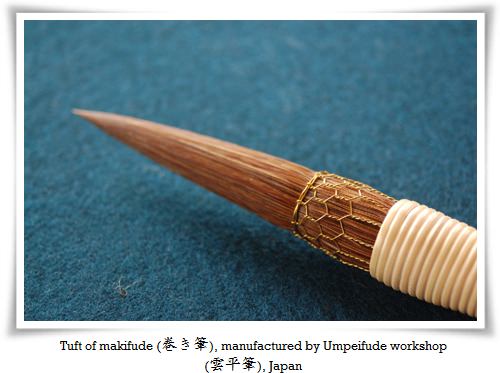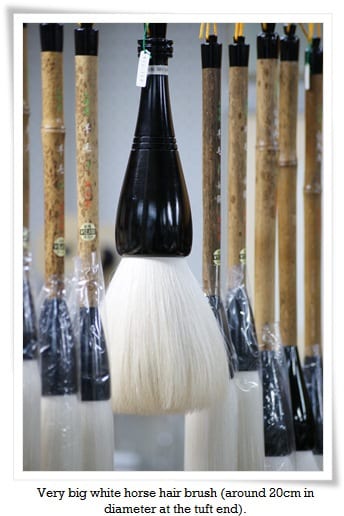A new brush, with the exception of sabaki fude (さばき筆), has its hairs glued together in the form of a spike (so called katame fude, かため筆 – lit. “hardened brush”). Sabaki fude are sold with released hairs. To remove the glue layer, the brush needs to be rinsed under running water (tepid, but not hot!). Then it needs to be hung it in a way that the tuft of the brush is submerged in a cup of fresh water for a couple of hours. This procedure will remove the excess glue layers and allow the brush to apply ink to the paper much better.
Before each writing session the brush needs to be soaked under running water. It will revitalize the hairs and make them more flexible, preventing them from being damaged by thick or drying ink. Think of it as warming up and stretching before doing physical exercise. It will increase ink-soaking capacity and make cleaning off the ink much easier after use.
After writing, the brush needs to be thoroughly rinsed with water. A large, thick brush (20cm long hair) may require as long as 30 minutes of washing or even more. The most vulnerable area, called the “loins” is where the hair is inserted inside the brush axis (ferrule). If all of the ink is not removed from this spot, it will harden and damage the brush permanently.
After washing, it is advisable to form a “spear” shaped tuft similar to when the brush was new (it is also suggested with sabaki fude). It can be hung tuft down or simply placed on a clean cloth to dry out. When it is dry, it can be placed in a brush holding cup or hung on a special brush rack. If they are not to be used for a long period of time, expensive brushes should be kept in a protective box to prevent them from gathering dust or being victim to insects.
A brush should not be used every day. They need a rest. “Tired” brushes will not perform at their full potential. This is one of the reasons why professional calligraphers own many brushes.


